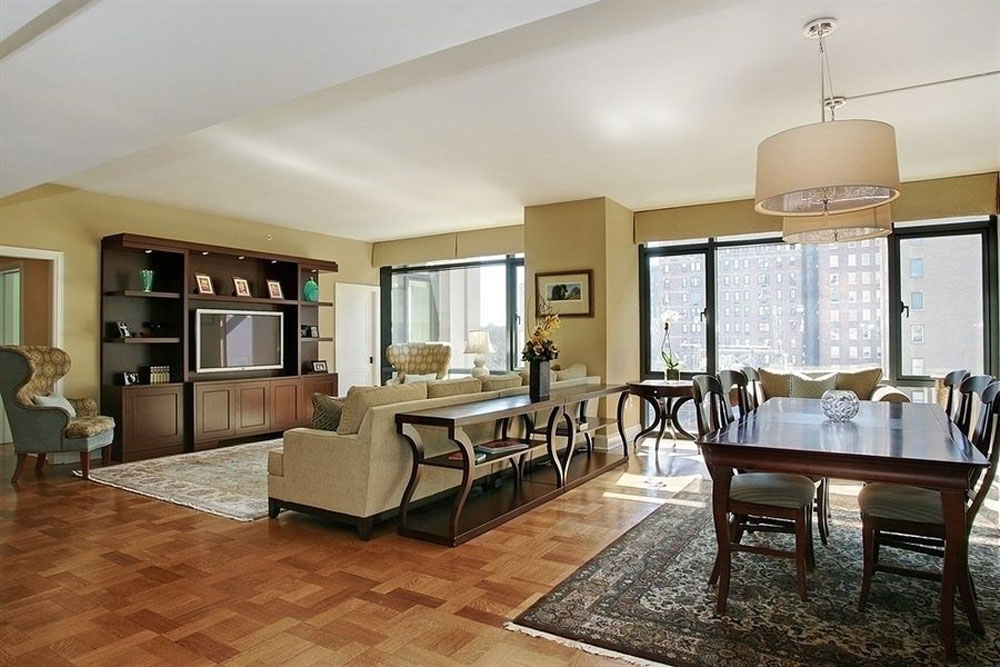
One of the biggest soundproofing issues today is the transmission of both impact and airborne noises from an upper condo unit to the people below. This problem is becoming increasingly common due to people living in smaller multifamily units. It is by far the most common problem we deal with here at Soundproofing America, Inc.
To deal with this issue from below we are going to be discussing the most effective method for alleviating this problem. You will need to have a contractor do this work unless you are very handy with drywall and the demolition of a ceiling assembly. The first order of business would be to remove the drywall ceiling so you are able to get to the joist cavity above. Once you have the ceiling drywall removed we would recommend that you install a sound absorbing insulation such as Rockwool (Roxul AFB or Roxul Safe and sound are great brands) or if you want a Green product, the Ultra Touch bonded cotton insulation is a great product. Which even insulation you decide to purchase, you will want to get a minimum of R-19 insulation. The R-19 is generally 5 – 5 ½” thick so it will not completely fill your joist cavity. Friction fit the Rockwool or Ultra Touch into the cavities and up against the bottom of the subfloor above. Next you will want to fill the rest of the joist cavity with a standard fiberglass insulation. So that the insulation fills the entire cavity.
Now that the absorbing insulation has been installed , we recommend that you install a layer of the 1# per sq ft mass loaded vinyl as a membrane directly stapled to the face of the joists. Basically you would use an air drive stapler or even a nail gun that shoots the roofing nails with the large plastic heads. You will be attaching the mass loaded vinyl barrier to the underside face of the joist, overlapping the seams by at least 1 inch and then caulking the overlap as well as the perimeter of the membrane, Remember that sealing these materials is key to getting the ultimate in soundproofing.
The next step would be to install sound isolation clips directly through the MLV membrane and into the ceiling joists. The sound clips are approximately 3” ling and about 1” wide and have a rubber isolation grommet which islates the clips from the rest of the ceiling structure. When installing the clips it is recommended that you install one sound clips for every 4 sq ft. Positioning of the clips depends on if your joists are 16” on center or 24” on center, but for argument’s sake lets go with one clips for every 4 sq ft. We will provide you with detailed installation instructions for the sound isolation clips. Once the sound clips are screwed to the joist you will have several rows of sound clips. Each row will be fitted with a metal furring channel (often referred to as “Hat Channel” as it looks like a hat from the side). The metal hat channel is compressed by hand and will snap fit into the sound clip. It is recommended that you use 25 gauge 7/8” tall hat channels. These channels work best in this application. Now that the sound clips and furring channels have been installed you will have numerous rows of channel which is where you will screw in the first layer of 5/8” drywall. You can use a soundproof drywall such as Quiet Rock or Suppress, but it is not necessary and the cost may be prohibitive. For this application we will be using a good quality 5/8” drywall. You will use self tapping drywall screws to attach the drywall directly to the metal furring channels. The drywall will be screwed directly into the furring channel so that you awill be completely isolating the new drywall ceiling from the joist structure above. And from the adjoining walls. There must be a ¼” gap between the new floated drywall ceiling and the the adjoin walls. This ¼: gap will be filled with a backer rod (rolled cord of open cell foam) and also caulked in with an acoustical caulk. The gap will be yapped mudded and painted just like a regulate drywall ceiling. You will want to use a mesh drywall tape and not over mud the gap area. The new floated ceiling would be much like a trampoline. Not contacting the above wooden structure or the adjoining walls.
One last option would be to add and additional layer of 5/8” drywall to the floated drywall for some additional sound damping. The second layer of drywall with the Green Glue would still be screwed into the furring channel as much as possible and would also be isolated from the adjoining walls.
Well, that’s the best way to soundproof a ceiling in a condo, or apartment. There are other less labor intensive methods for soundproofing a condo which we will explore in later posts. For now, this is Bob O. Adios!
www.soundproofingamerica.com
www.soundproofingamerica.us
e-mail bob@soundproofingamerica.com
PH (877) 530-0139
www.soundproofingamerica.com
www.soundproofingamerica.us
e-mail bob@soundproofingamerica.com
PH (877) 530-0139
Soundproofing, soundproof, mass loaded vinyl, sound absorption, soundproof foam, acoustical treatment, Green Glue, noise control, Soundproof doors, recording studio windows, recording studio doors, sound isolation, home theater soundproofing, industrial soundproofing, home soundproofing, Ultra touch insulation, sound barrier, wall soundproofing, floor soundproofing, soundproof ceiling
Just to add there are three mechanisms available to improve structural deflection problems: 1) increase the stiffness of the floor system, 2) increase the structural damping, and 3) increase the vibrational decoupling between the floor and the ceiling.
ReplyDeleteWe have the best In Home insulation installers in Adelaide